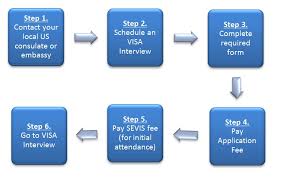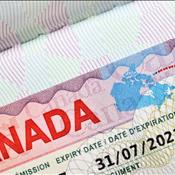
Planning a trip to Europe is an exciting prospect, filled with the promise of breathtaking sights and new experiences. However, the dream of a European getaway can quickly turn into a logistical nightmare due to the significant challenges currently faced by applicants for a Schengen visa. The post-pandemic surge in travel demand, coupled with evolving regulations and increased security measures, has led to widespread visa appointment delays. This article provides a detailed guide to help you navigate these hurdles, from securing that crucial visa appointment to understanding the latest guidelines and ensuring your visa application is as robust as possible. We will explore the entire process in detail, giving you the best chance for a successful visa application.
The New Reality: Why are there Schengen Visa Appointment Delays?
The travel landscape has shifted dramatically. While the desire to travel has returned with a vengeance, the infrastructure supporting international travel has yet to fully catch up. This is the primary reason behind the severe visa appointment delays that have become the new normal for many aspiring travelers. Consular sections and visa application centers are grappling with an unprecedented volume of applications, creating a bottleneck that can significantly impact your Europe trip planning.
Several key factors contribute to these delays:
Unprecedented Demand: After years of travel restrictions, there's a massive pent-up demand for international travel. This has led to a huge number of visa applications being submitted simultaneously, overwhelming the capacity of embassies and visa centers.
Staffing Shortages: Many consular services are still operating with reduced staff, making it difficult to process the high volume of Schengen visa applications in a timely manner.
Introduction of New Systems: The European Union is in the process of rolling out new digital systems, such as the Entry/Exit System (EES) and the European Travel Information and Authorisation System (ETIAS), which are designed to enhance security. While beneficial in the long run, the initial implementation of such systems can cause temporary slowdowns in the visa application process.
Increased Scrutiny: Embassies are now performing more stringent background and biometric screenings. This extra layer of security, while necessary, adds time to the processing of each Schengen visa application.
These visa appointment delays mean that you can no longer afford to be complacent when it comes to your Europe trip planning. The days of booking your flights a few weeks in advance and then securing a visa appointment are over. A proactive and well-prepared approach is absolutely essential to a successful visa application.
The New Timeline for Your Schengen Visa Application
To successfully navigate the current environment, you must adjust your Europe trip planning timeline. The standard advice of applying 15 days before your trip is now dangerously outdated. A smart traveler should begin their Schengen visa application process much earlier.
When to Start Planning and Applying

The golden rule is to start your Schengen visa application as soon as possible. The official rule is that you can apply up to six months before your intended travel date. Given the current visa appointment delays, this is not just a suggestion; it is a necessity.
Short Trips (Tourism/Business): Begin your Europe trip planning and start looking for a visa appointment at least 90 days (3 months) before your planned departure. This gives you a buffer for finding a slot and for the embassy to process your visa application.
Peak Season Travel: If you're planning to travel during summer (June-August) or the winter holidays (December), when demand is highest, you should start even earlier. Look to apply 120 days (4 months) or more in advance. These are the periods where visa appointment delays are most pronounced.
Steps for Securing Your Visa Appointment

Booking a visa appointment is often the first and most difficult hurdle. Many applicants report a lack of available slots on the websites of visa centers like VFS Global or TLS Contact. This is where persistence is key.
Determine the Correct Embassy: First, identify the correct embassy or consulate to apply to. This is determined by the Schengen country where you will spend the most time. If your stay is equal in multiple countries, you should apply to the embassy of the country you will enter first. This is a critical step in the Schengen visa application process.
Use the Official Channels: Rely only on official websites of the embassy or their authorized visa application center. Beware of third-party agents who may charge exorbitant fees for unverified services.
Check Frequently: Availability of a visa appointment can change unexpectedly as slots are released. Make it a habit to check the booking portal multiple times a day, early in the morning and late at night. Many applicants have found success this way.
Use the Waiting List: Some embassies, like the German Embassy in Pakistan, have implemented a waiting list system to manage demand. You register on this list and are then notified when a visa appointment becomes available. It's a fair and transparent way to handle the high volume of applications.
By being diligent and starting your Schengen visa application early, you can overcome the challenges posed by visa appointment delays and set yourself up for a successful Europe trip planning experience.
The Latest Guidelines: A Checklist for a Robust Visa Application
A complete and well-organized visa application is the best way to prevent further delays. Incomplete or incorrect documents are a primary cause of rejection and can significantly extend your processing time. Here are the latest guidelines and a checklist to ensure your visa application is flawless.
Essential Documents for Your Schengen Visa Application
You must gather a set of mandatory documents for every Schengen visa application. It's important to remember that these are the minimum requirements, and you may need additional documents depending on your specific circumstances.
Application Form: The completed and signed Schengen visa application form. For minors, the form must be signed by both parents or legal guardians.
Passport: Your passport must be valid for at least three months beyond your intended date of departure from the Schengen area. It must also have been issued within the last 10 years and contain at least two blank pages.
Photographs: Two recent passport-sized photographs that meet the specific Schengen requirements (white background, no older than six months).
Travel Insurance: A mandatory requirement for a Schengen visa. The insurance must have a minimum coverage of €30,000 for medical expenses, hospitalization, and repatriation, and be valid in all Schengen states for the entire duration of your trip.
Flight and Accommodation Proof: Confirmed round-trip flight reservations and proof of accommodation (e.g., hotel bookings, tour confirmations) for the entire duration of your stay. Note: Some embassies recommend booking refundable flights and hotels to mitigate financial risk in case your visa application is rejected.
Proof of Financial Means: You must demonstrate that you have sufficient funds to cover your stay. This includes:
Last three to six months' bank statements, duly stamped and signed by the bank.
Income tax returns (ITR) for the last two years.
Salary slips for the last three months (if employed).
Proof of Employment/Purpose of Travel:
For Employees: An introduction letter from your employer on company letterhead. It should state your position, dates of travel, and purpose of the visit, and confirm that you have a "no objection" to your leave.
For Business Trips: An official invitation letter from the company in the Schengen state, along with a letter from your employer and proof of any relevant business registrations.
For Students: A no-objection letter from your school or university, along with proof of enrollment.
New and Evolving Requirements
Stay informed about the latest guidelines as they can change. For example, some countries have recently introduced specific rules for how bank statements should be submitted or have changed the procedure for submitting documents. Switzerland, for instance, now only accepts documents listed on its official checklist, and no additional papers will be considered. This highlights the importance of checking the embassy's specific requirements before your visa appointment.
What to Expect on the Day of Your Visa Appointment
Once you've successfully booked your visa appointment, the next step is the in-person interview and document submission. This is a critical stage of the Schengen visa application process.
Preparing for Your Appointment
Organize Your Documents: Arrange all your documents in the exact order specified on the official checklist provided by the embassy or visa center. This significantly speeds up the process at the counter.
Arrive on Time: Arriving early is always a good idea, as it gives you time to navigate any queues and ensures you don't miss your slot.
Be Ready for Biometrics: Most first-time applicants for a Schengen visa are required to provide biometric data, which includes fingerprints and a digital photograph. This data is stored in the Visa Information System (VIS) and is valid for 59 months. If your biometrics have been collected within this period for a previous Schengen visa, you may not need to provide them again. This is one of the most important aspects of the latest guidelines.
Prepare for Questions: Be ready to answer questions about your Europe trip planning. The consular officer may ask about your itinerary, your financial situation, and your ties to your home country to ensure you intend to return.
The Visa Fee
The standard Schengen visa fee is currently around €80 for adults and €40 for children aged 6-12. Children under 6 are exempt from the fee. Note that there may be additional service charges if you apply through a visa application center like VFS Global. This fee is non-refundable, regardless of the outcome of your visa application.
Post-Application: The Waiting Game and What to Do
The typical Schengen visa processing time is 15 calendar days, but it can be extended up to 30 or even 60 days in some cases, particularly during peak seasons or for complex applications.
Track Your Application: Most visa centers provide an online tracking system that allows you to monitor the status of your Schengen visa application. Use this feature to stay informed.
Do Not Book Non-Refundable Travel: This is a crucial piece of advice for anyone engaged in Europe trip planning. The risk of a visa denial or processing delays means you should only book fully refundable flights and accommodation. This protects you from financial loss in case your travel plans are disrupted.
If Your Visa is Rejected: While a rejection is disappointing, it is not the end of the road. The rejection letter will detail the reason for the decision. You have the right to appeal the decision. Be aware that some countries are changing their appeal processes; for example, Germany no longer allows informal appeals, requiring a formal legal procedure instead.
In conclusion, a successful Schengen visa application in the current climate requires meticulous Europe trip planning, a deep understanding of the latest guidelines, and a patient, persistent approach to overcoming visa appointment delays. By following these steps and preparing thoroughly, you can significantly increase your chances of a smooth application process and an enjoyable trip to Europe. ✈️🌍
;More Travel News
-
 22-May-2025Saudi Ministers Intensify Hajj 2025 Readiness Inspections Across Key Hubs, Including Jeddah
22-May-2025Saudi Ministers Intensify Hajj 2025 Readiness Inspections Across Key Hubs, Including Jeddah -
 20-Dec-2021New Umrah Covid Policy
20-Dec-2021New Umrah Covid Policy -
 28-Mar-2022Woman to perform Umrah without need for Mahram supervision
28-Mar-2022Woman to perform Umrah without need for Mahram supervision -
 20-Oct-2025UAE Golden Visa Opens for Waqf Donors
20-Oct-2025UAE Golden Visa Opens for Waqf Donors -
 15-Dec-2022UAE Changes Visit Visa Extension Policy
15-Dec-2022UAE Changes Visit Visa Extension Policy -
 16-Mar-2020Top Tourist Spots in South Punjab
16-Mar-2020Top Tourist Spots in South Punjab -
 10-May-2023Canadian government reduces the processing period for Pakistan
10-May-2023Canadian government reduces the processing period for Pakistan -
 20-Jan-2021Best Places For Honeymoon 2021 In Pakistan
20-Jan-2021Best Places For Honeymoon 2021 In Pakistan -
 14-Oct-2025Winter Honeymoon in Maldives – Perfect Weather, Peaceful Beaches
14-Oct-2025Winter Honeymoon in Maldives – Perfect Weather, Peaceful Beaches -
 25-Feb-2025Limited Offer! Ramadan 2025 Umrah Packages with Flights & Hotels – Book Now with Trips.pk
25-Feb-2025Limited Offer! Ramadan 2025 Umrah Packages with Flights & Hotels – Book Now with Trips.pk -
 03-Oct-2020Pakistan Reopens Kartarpur Corridor As COVID-19 Situation Improves
03-Oct-2020Pakistan Reopens Kartarpur Corridor As COVID-19 Situation Improves -
 22-Jul-2019What To Do And Where To Visit In Rainy Season In Pakistan
22-Jul-2019What To Do And Where To Visit In Rainy Season In Pakistan
